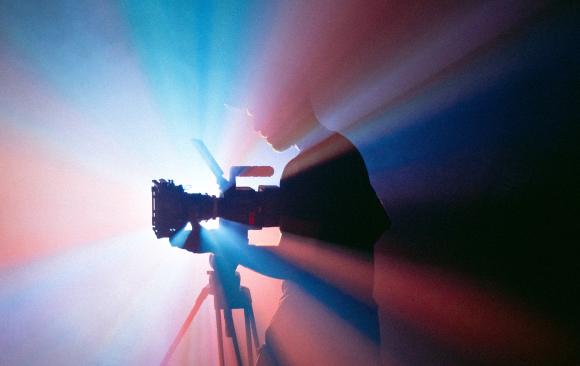Trying to decide which camera is best to use for your next video shoot?
Choosing the right camera can be a daunting task, especially as an ever-expanding array of new choices come to market. When deciding which camera is best for your job, it is important to consider your production needs and desired final project: are you filming for social media content or for making your next narrative film?
Here's a quick starter list of camera types for different types of production:
- Cellphone Cameras: In recent years, it has been proven that creators can do a lot with a smartphone video camera. The mantra that “the best camera to use is the one that you have,” still often holds true, especially as phone camera technology is consistently and rapidly improving. Using your phone for capturing social media content, vlogging and filming lower budget productions can be a great solution, and of course, phones are literally made for livestreaming, lives and reels. Cellphone cameras do have certain limitations: limited audio recording, lack of optical zoom, less storage, and smaller camera sensor size. When using a phone, make sure that these limitations will not compromise your artistic vision.
- Cinema Cameras: Cinema cameras such as the Canon C300 and Black Magic URSA have Super 35 sensors, combining a cinematic look and interchangeable lens options with the many conveniences and portability of a traditional camcorder. Built-in neutral density filters, XLR ports for plugging in external microphones, and extensive battery life make these cameras ideal for mid-range "run and gun" documentaries, commercials, news segments, and feature films. When using cinema cameras, keep in mind that they can be heavier, especially as you rig them out with additional pieces such as stabilizer support and audio recording equipment. These additional pieces will also add to your equipment budget.
- Mirrorless Cameras: Many in the video world believe that mirrorless cameras are rapidly replacing DSLR cameras. In part, the lightweight body and smaller camera size that mirrorless offers make them an attractive option. With their cinema-quality image sensors, mirrorless cameras are a good choice for small productions and for semi-pro or pro videographer gigs where a lightweight camera is a necessity. High-quality social media content can also easily be shot with a mirrorless.
- DSLRs: While many creators are ditching their DSLRs for mirrorless cameras, DSLRs still have their advantages. They are a good choice for semi-pro or pro videographers especially because they often win the battery life competition when compared with mirrorless cameras. Because some manufacturers have stopped creating new models, certain options are becoming fairly affordable. This can make DSLRs a good option for those who want to upgrade from their cellphone cameras but who can't yet afford the investment of a mirrorless or cinema camera. Additionally, they can better handle larger lenses because of their robust size.
- Camcorders: While camcorders may not provide the same cinema-quality visuals as other cameras, they can be a solid choice for a field, documentary or broadcast shoot. Advantages include long recording times, small-size recording formats, built-in XLR inputs for external microphone capabilities, built-in ND filters and with some models, the ability to livestream directly from the camera itself. Using camcorders for "run and gun" productions can be a cost-effective way to film your project.
For more information, tips and tricks visit www.mnn.org/learn for free workshops, professional courses, filmmaking bootcamps, and more resources to make your productions successful.


